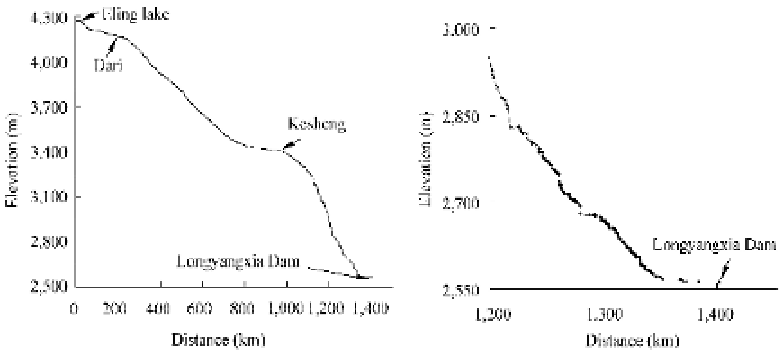Environmental Engineering Reference
In-Depth Information
(a) (b)
Fig. 3.50
(a) Hutiaoxia barrier lake; (b) Part of the step-pool system on the Hutiaoxia landslide dam (See color
figure at the end of this topic)
transition from landslide dams into large knickpoints has greatly influenced river profiles and landscape
evolution. The longitudinal bed profile of the Yellow River in the 1,400 km long reach is very unusual,
with a convex upward curve caused by the two large knickpoints. Harkins et al. (2007) reported a similar
phenomenon for tributaries of the Yellow River. Downstream reaches are steep but incision is controlled
by step-pool systems. Upstream reaches have adjusted to a new, unchanging base level.
Fig. 3.51
(a) Bed profile of the Yellow River from the source (Erlin Lake) to Longyangxia Dam; (b) Part of the
Kesheng knickpoint consisting of several landslide dams and barrier lakes
Long term aggradation following the knickpoint formation has resulted in wide and shallow cross
sections in upstream areas, whereas the landslide dam section itself is narrow and deep. The distribution
of channel processes, and resulting river morphologies, have adjusted to these damming events.
Localized aggradation upstream of knickpoints has brought about a transition from vertical bed evolution
to horizontal fluvial process. Reduction in slope and accumulation of fine-grained sediments has
facilitated the development of anabranching and braided channel planforms (e.g. just upstream of Dari,
see Fig. 3.52).






Search WWH ::

Custom Search